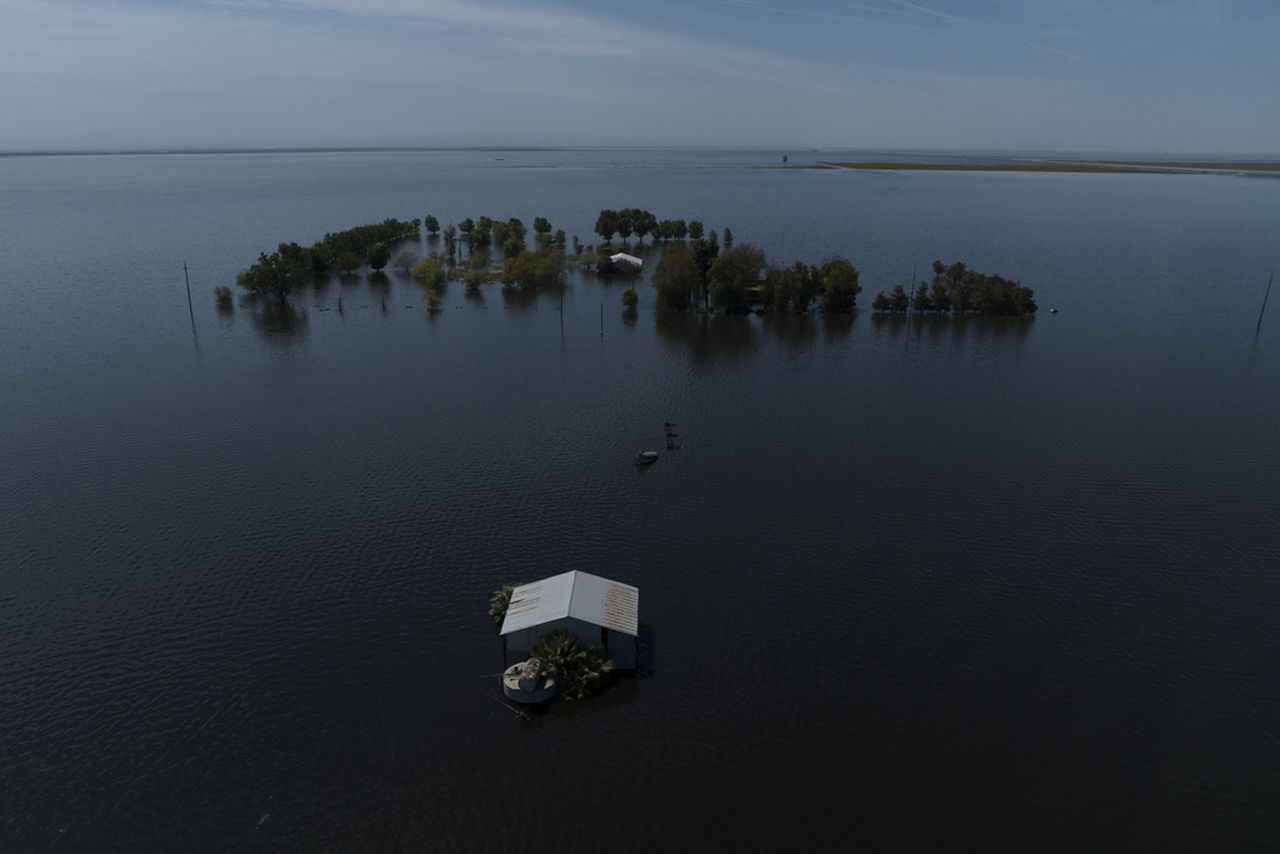Flooding, Hurricanes and Wildfires: America’s Increasing Climate Catastrophes mean few places are safe
Natural disasters and severe weather are a common part of life in just about every region of the United States, but in recent years have become more frequent, destructive, and costly because of human activity. Because of several factors, the United States now leads the world in climate catastrophes.
And seemingly nowhere is safe, according to recent analyses of regional climate risk, which found that dozens of states and municipalities are at severe risk from flooding, wildfires, hurricanes and drought, among other extreme types of weather.
So bad is the climate problem insurance companies are fleeing some states.
In the short term, Texas, Florida, New Jersey and California face severe flooding risks, according to Moody’s Analytics, the risk analysis division of the financial services giant, and First Street Foundation, a New York-based tech company that analyzes data to assess climate change risk to property.
According to FEMA, flooding is a factor in more than 90 percent of disaster-related property damage.
And while some political and corporate measures are being taken to address the human contributions to climate change, things will continue to get worse.
“There are no winners in a world where climate change gets worse,” Adam Kamins, director of regional economics at Moody’s Analytics and author of a recent study on climate risks in the United States, told USA Today.
In just the past year, the country has been battered by a series of severe weather events. Atmospheric rivers brought historic flooding and snowfall to California. Then there were flash floods in Missouri, record-breaking heat waves on the west coast, derechos in Iowa, bomb cyclones, polar vortexes, and Nor’easters chilled the east coast. Then throw in hurricanes, wildfires and huge snow blizzards that trapped Native American tribes in various parts of the West and Midwest. It’s a lot!
Earlier this week, climate change data from the National Oceanic and Atmospheric Administration showed that seven states on the east coast had their warmest start to the year on record.
While it’s unlikely that any part of the United States will disappear under the wash of the Atlantic, the Gulf of Mexico or the Pacific anytime soon, plenty of places are at risk from the long arm of climate change.
On the East Coast, Florida and the Carolinas are at exceptionally high risk from wind, flooding and sea level rise, according to Moody’s analysis. Florida has 8,346 miles of shoreline and is surrounded on three sides by water. It’s a no-brainer. The Carolinas, on the other hand, are at very low elevations and have experienced sea level rises of about 11 inches over the last 60 years. A one-meter increase would devastate 2,300 square miles of coastal areas, according to SeaLevelRise.org.
The Southwest will likely see an increased risk from heat and fire, particularly in Arizona. And although the region has seen drought conditions ease in recent months, the threat of long-term drought continues. But the problem with drought and sudden downpours, as we saw over the turn of the year, is that the ground is so dry that it can’t absorb water. That’s known as hydrophobia. Rather than absorb into the ground, the water runs off, creating deadly flash flooding.
The country’s interior is at risk from intense heat, particularly in urban areas of the Pacific Northwest and Great Lakes. That also can mean sudden downpours and flash flooding.
The northern states, from Idaho to Minnesota, will likely fare better than others, with far fewer climate risks to think about. For example, there’s no risk from hurricanes, which are becoming more frequent and destructive because of increased water temperatures close to the equator, the Atlantic and the Gulf of Mexico. Hurricanes feed off warm water.
When it comes to acute physical risks like sudden floods, wildfires, and hurricanes, states on the east and south coasts are at higher risk, according to Moody’s analysis. They are:
· Florida
· Louisiana
· South Carolina
· North Carolina
· Delaware
· Rhode Island
· New Jersey
· Virginia
· Massachusetts
· Connecticut
Moody’s also lists cities with more gradually increasing climate change risks:
· New York City
· Long Island, New York
· Oakland, California
· Phoenix
· Tucson, Arizona
· Wilmington, Delaware
· North Port, Florida
In the Southeast, the risk of hurricanes, tropical storms, sea-level rise and increased heat will likely hit the following cities:
· Jacksonville, North Carolina
· New Bern, North Carolina
· Myrtle Beach, South Carolina
· Wilmington, North Carolina
· Greenville, North Carolina
· Charleston, South Carolina
· Punta Gorda, Florida
· Deltona, Florida
· San Juan, Puerto Rico
· Palm Bay, Florida
· Goldsboro, North Carolina
While the risk from climate change is now well-known and, to a lesser degree, believed, how it hits regions in the U.S. is rapidly changing.
For example, as land in southern Louisiana continues to be lost to erosion, hurricanes are able to creep closer to New Orleans without losing their strength. That creates danger for residents and problems for city planners. Drought in California and other parts of the west and southwest have historically been broken by the rains brought by atmospheric rivers. But as temperatures heat up in the tropics, which is where atmospheric rivers come from, the rain and snow have reached record-breaking levels.
“Every year it becomes increasingly crystal-clear, just the amount of risk that we face, whether it’s increasingly severe natural disasters or droughts and heat risk,” said Kamins. “In some cases, it’s creating renewed momentum or brand-new momentum for governments and businesses that hadn’t been thinking seriously about the impact of climate change before.”
